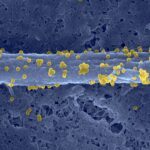Link to Pubmed [PMID] – 35031273
Link to DOI – 10.1016/j.jaci.2021.12.790
J Allergy Clin Immunol 2022 Jun; 149(6): 2116-2125
Noninfectious manifestations-allergy, autoimmunity/inflammation, lymphoproliferation, and malignancies-are known to exist in many primary immunodeficiency diseases (PID) and to participate in prognosis.To obtain a global view on their occurrence, we retrieved data from a retrospective cohort of 1375 patients included in the French National Reference Center for Primary Immune Deficiencies (CEREDIH) for whom we had a 10-year follow-up since inclusion in the registry.These patients were followed for 10 years (2009-2018) by specialized centers in university hospitals. This study showed that 20.1% of patients without prior curative therapy (n = 1163) developed at least 1 manifestation (event) encompassing 277 events.Autoimmune/inflammatory events (n = 138) and malignancies (n = 85) affected all age classes and virtually all PID diagnostic groups. They were associated with a risk of death that occurred in 195 patients (14.2%) and were found to be causal in 43% of cases. Malignancies (odds ratio, 5.62; 95% confidence interval, 3.66-8.62) and autoimmunity (odds ratio, 1.9; 95% confidence interval, 1.27-2.84) were clearly identified as risk factors for lethality. Patients who underwent curative therapy (mostly allogeneic hematopoietic stem cell transplantation, with a few cases of gene therapy or thymus transplantation) before the 10-year study period (n = 212) had comparatively reduced but still detectable clinical manifestations (n = 16) leading to death in 9.4% of them.This study points to the frequency and severity of noninfectious manifestations in various PID groups across all age groups. These results warrant further prospective analysis to better assess their consequences and to adapt therapy, notably indication of curative therapy.

